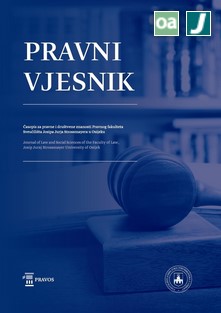COMPETITION LAW IN REPUBLIC OF NORTH MACEDONIA - 20 YEARS OF COMPETITION LAW IN REPUBLIC OF NORTH MACEDONIA
COMPETITION LAW IN REPUBLIC OF NORTH MACEDONIA - 20 YEARS OF COMPETITION LAW IN REPUBLIC OF NORTH MACEDONIA
Author(s): Borka Tushevska GavrilovikjSubject(s): Business Economy / Management, History of Law, Constitutional Law, Pre-WW I & WW I (1900 -1919), Present Times (2010 - today), Law on Economics, Financial Markets, EU-Legislation, Comparative Law
Published by: Pravni fakultet Sveučilišta Josipa Jurja Strossmayera u Osijeku
Keywords: antitrust; concentrations; small market; dominant position; horizontal and vertical constraints;
Summary/Abstract: This article examines the laws in the Republic of North Macedonia (hereinafter RNM), that prohibit agreements among competitors to fix prices, divide markets or in other ways avoid or undermine market competition, otherwise known as competition laws. It explores the conditions and challenges in implementing Macedonian competition laws, as well as the role of the state (regulatory) authorities, the degree to which the competition laws comply with the European Union’s competition laws, and finally, the degree to which competition laws are effective and beneficial for the Macedonian economy. Properly implemented competition laws hold much promise. The enactment of competition laws is fundamental for the benefits of a market economy to be achieved. This encompasses economic growth, innovation, lower prices and higher quality of goods and services. The enactment of competition laws since the independence of the Republic of Macedonia is furthermore important. This is due to Macedonian obligations to meet the requirements for EU accession. Additionally, adoption of competition law and competition by-laws in RNM, positively affects on the work of authorities for the protection of competition. What is most important, this competition legal regime represents a base for reducing the abuse of the state authorities and theirs incompetent behaviors. At the end, the article contains conclusions, opinions and suggestions from the conducted research, which hopefully will be beneficial for the relevant auditorium. The analytical-descriptive method, the comparative method, the method of analysis and synthesis, and the method of induction and deduction were used to analyze the subject matter for this article.
- Issue Year: 36/2020
- Issue No: 3-4
- Page Range: 43-68
- Page Count: 26
- Language: English

